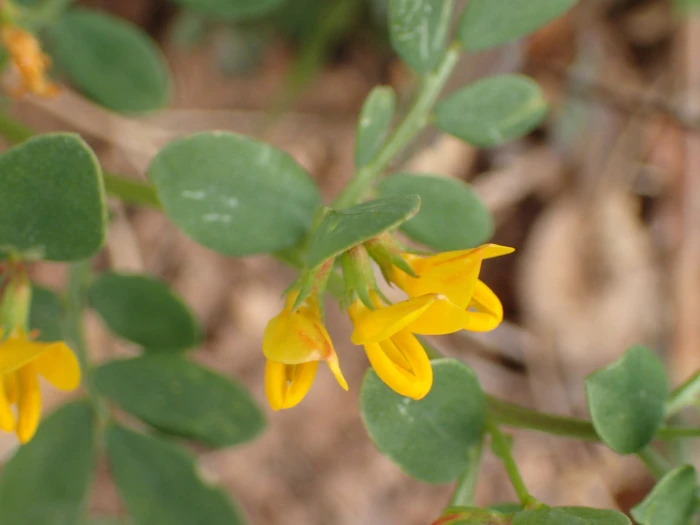Coastal Bird’s-Foot Trefoil
(Acmispon maritimus)
Coastal Bird’s-Foot Trefoil (Acmispon maritimus)
/
/

George Williams
CC BY 4.0
Image By:
George Williams
Recorded By:
Copyright:
CC BY 4.0
Copyright Notice:
Photo by: George Williams | License Type: CC BY 4.0 | License URL: http://creativecommons.org/licenses/by/4.0/ | Rights Holder: George Williams | Publisher: iNaturalist | Date Created: 2021-03-19T07:59:57-07:00 |


















Estimated Native Range
Climate Requirements for Hangzhou, China
| This Plant | Your Site | Plant Suitability for Your Location | ||
|---|---|---|---|---|
| • Precipitation | 3" - 68" | 51" | Aquatic | Aquatic |
| • High Temp. | 66°F - 110°F | 92°F | Your summer temperatures are normal for this plant. | Excellent |
| • Low Temp. | 17°F - 58°F | 33°F | Your winter temperatures are normal for this plant | Excellent |
This plant may not grow well at your location - your precipitation is too high.
Summary
Acmispon maritimus, commonly known as Coastal Bird’s-foot Trefoil, is an annual herb native to coastal dunes and bluffs. It is found predominantly along the coast of California, the Southwestern US states, and extends into Baja California in Mexico. This plant typically grows to a modest size with slender stems reaching up to 60 cm tall. The leaves are pinnate with small leaflets arranged in pairs. During the flowering season, which occurs from April to August, Acmispon maritimus produces an inflorescence of small, showy yellow flowers that are attractive to pollinators. The fruit is a slender legume pod that can be up to 1 inch long, which splits open upon maturation to release seeds.
Coastal Bird’s-foot Trefoil is valued for its ability to thrive in sandy, well-drained soils and its resilience to salt spray, making it suitable for coastal restoration projects and erosion control. It requires minimal water once established, preferring full sun to light shade conditions. This species is not commonly used in traditional garden settings but can be an interesting addition to native plant gardens or wildflower meadows. A notable characteristic is its increased rate of seed germination following exposure to heat, such as after a fire, which is an adaptation to its fire-prone native habitat. While generally disease-free, it can occasionally suffer from root rot in poorly drained soils.CC BY-SA 4.0
Coastal Bird’s-foot Trefoil is valued for its ability to thrive in sandy, well-drained soils and its resilience to salt spray, making it suitable for coastal restoration projects and erosion control. It requires minimal water once established, preferring full sun to light shade conditions. This species is not commonly used in traditional garden settings but can be an interesting addition to native plant gardens or wildflower meadows. A notable characteristic is its increased rate of seed germination following exposure to heat, such as after a fire, which is an adaptation to its fire-prone native habitat. While generally disease-free, it can occasionally suffer from root rot in poorly drained soils.CC BY-SA 4.0
Plant Description
- Plant Type:
- Height: 0.5-1.5 feet
- Width: 1-2 feet
- Growth Rate: Moderate
- Flower Color: Yellow
- Flowering Season: Spring, Summer
- Leaf Retention:
Growth Requirements
- Sun: Full Sun
- Water: Low
- Drainage: Fast, Medium
Common Uses
Drought Tolerant, Low Maintenance
Natural Habitat
Native to coastal dunes and bluffs along the California coast and extending into Baja California, Mexico
Other Names
Common Names: Coastal lotus , Beach lotus
Scientific Names: Acmispon maritimus , Anisolotus maritimus , Hosackia maritima , Lotus salsuginosus
GBIF Accepted Name: Acmispon maritimus